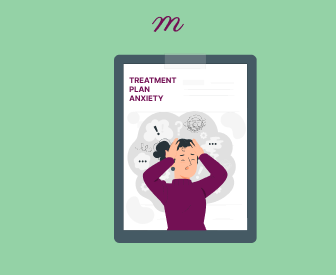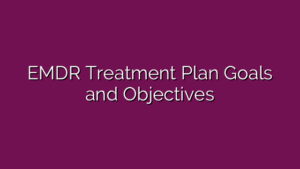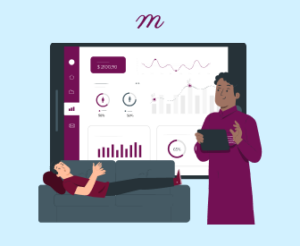As mental health providers, we frequently encounter individuals dealing with anxiety in many forms. While anxiety is a common part of the human experience, it can occasionally progress into a debilitating disease that has a substantial impact on the lives of our clients. In this thorough guide, we will look at everything from the clinical presentation of anxiety disorders to evidence-based treatment options. Whether you’re an experienced practitioner or new to the profession, this article will provide you with useful ideas and practical tactics for effectively treating anxiety disorders. Let’s look at anxiety, its symptoms, and the tools we may use to help our clients feel better and recover control of their life.
What we are going to cover in this article-
- What is anxiety
- DSM classification of anxiety
- Treating anxiety disorders
- Treatment Plans
- Conclusion
What is Anxiety?
Anxiety is a typical human emotion characterized by feelings of concern, unease, nervousness. It is natural to feel anxious in response to stress or uncertainty sometimes, and this can be helpful as it keeps us on our toes. Nonetheless, when excessive anxiety becomes persistent and begins to adversely affect the daily functioning of an individual then it can be classified as an anxiety disorder.
Examples of everyday anxiety:
- Feeling nervous before a job interview or important presentation
- Worrying about a loved one’s health or safety
- Experiencing butterflies in your stomach before a first date
- Feeling uneasy when trying something new or unfamiliar
Examples of clinical anxiety:
- Avoiding social situations due to intense fear of judgment or embarrassment
- Experiencing panic attacks that seem to come out of nowhere
- Having intrusive thoughts or compulsions that disrupt daily life
- Feeling constant, excessive worry about various aspects of life that’s difficult to control
The main point of difference between everyday anxiety and clinical anxiety is seen in terms of intensity, duration and effect on daily activities. Comparatively severe than other forms of anxiety due to its long lasting nature which obstructs one’s capacity to perform work activities such as retaining relationships or doing anything else one does daily.
Recognizing the difference between everyday worry and an anxiety disorder is the first step – the next is creating a clear treatment plan that helps address it. A well-structured plan includes actionable goals, evidence-based interventions, and provides a roadmap for progress that both client and clinician can trust. With Mentalyc, you don’t have to start from scratch: the platform instantly generates tailored treatment plans, complete with suggested interventions and measurable goals, while also helping you track progress as clients grow and change.
DSM Classification of Anxiety
The Diagnostic and Statistical Manual of Mental Disorders, Fifth Edition, Text Revision (DSM-5-TR) is the most recent version. It lists several types of anxiety disorders:
a) Generalized Anxiety Disorder (GAD): Characterized by persistent and excessive worry about various aspects of life.
b) Panic Disorder: Involves recurrent, unexpected panic attacks and persistent concern about future attacks.
c) Specific Phobia: An intense, irrational fear of a specific object or situation.
d) Social Anxiety Disorder (Social Phobia):Marked fear or anxiety about social situations where one might be scrutinized by others.
e) Agoraphobia: Fear of places or situations where escape might be difficult or help unavailable if panic symptoms occur.
f) Separation Anxiety Disorder: Excessive fear or anxiety about separation from attachment figures.
g) Selective Mutism:Consistent failure to speak in specific social situations despite speaking in other situations.
h) Other Specified Anxiety Disorder and Unspecified Anxiety Disorder: Categories for anxiety symptoms that don’t meet the full criteria for other disorders.
Treating anxiety disorders
a) Cognitive Behavioral Therapy (CBT): Focuses on identifying and changing negative thought patterns and behaviors associated with anxiety.
b) Exposure Therapy: Gradually exposes individuals to anxiety-provoking situations or objects to reduce fear and avoidance.
c) Acceptance and Commitment Therapy (ACT): Emphasizes accepting uncomfortable thoughts and feelings while committing to valued actions.
d) Mindfulness-Based Therapies: Incorporate mindfulness techniques to help individuals stay present and manage anxiety symptoms.
e) Dialectical Behavior Therapy (DBT): Combines cognitive-behavioral techniques with mindfulness and acceptance strategies.
f) Psychodynamic Therapy: Explores unconscious conflicts and past experiences that may contribute to anxiety.
g) Medication: Antidepressants (SSRIs, SNRIs), anti-anxiety medications (benzodiazepines), and beta-blockers are commonly prescribed.
h) Combination Treatments: Often, a combination of psychotherapy and medication is used for optimal results.
Treatment Plan for Anxiety Examples
Now let us look at a few examples of how you can design the treatment plan for anxiety disorders that can help guide your own formulation of a treatment plan –
Cognitive Behavioral Therapy (CBT) Treatment Plan
Goal:
Reduce anxiety symptoms and improve daily functioning by identifying and modifying negative thought patterns and behaviors.
Treatment Plan:
Assessment and Psychoeducation (Sessions 1-2)
- Conduct a thorough assessment of anxiety symptoms and their impact on daily life
- Educate the client about anxiety and the CBT model
- Introduce the concept of thought records
Cognitive Restructuring (Sessions 3-6)
- Identify and challenge cognitive distortions
- Practice reframing negative thoughts
- Develop and implement positive self-talk strategies
Behavioral Activation and Relaxation Techniques (Sessions 7-10)
- Introduce and practice progressive muscle relaxation and deep breathing exercises
- Develop a plan for gradually increasing pleasant and meaningful activities
- Implement sleep hygiene techniques
Problem-Solving and Coping Skills (Sessions 11-14)
- Teach and practice problem-solving techniques
- Develop personalized coping strategies for managing anxiety
- Address any specific phobias or anxiety-provoking situations
Relapse Prevention and Maintenance (Sessions 15-16)
- Review progress and achievements
- Develop a relapse prevention plan
- Discuss strategies for maintaining gains and handling future challenges
Exposure Therapy Treatment Plan:
Goal:
Reduce anxiety and avoidance behaviors related to specific feared situations or objects through gradual, controlled exposure.
Treatment Plan:
Assessment and Psychoeducation (Sessions 1-2)
- Conduct a thorough assessment of anxiety symptoms and specific fears
- Educate the client about anxiety and the exposure therapy model
- Develop a fear hierarchy (list of feared situations ranked by intensity)
- Relaxation Training (Sessions 3-4)
- Teach and practice deep breathing exercises
- Introduce progressive muscle relaxation
- Develop mindfulness skills for managing anxiety during exposures
Imaginal Exposure (Sessions 5-7)
- Begin with low-intensity items on the fear hierarchy
- Guide the client through imagining anxiety-provoking scenarios
- Process thoughts and feelings after each exposure
In Vivo Exposure (Sessions 8-14)
- Gradually progress through the fear hierarchy with real-life exposures
- Start with lower-intensity situations and work up to more challenging ones
- Provide support and guidance during exposures
- Process thoughts and feelings after each exposure
Relapse Prevention and Maintenance (Sessions 15-16)
- Review progress and achievements
- Develop a plan for continuing exposures independently
- Discuss strategies for handling setbacks and maintaining gains
Treatment planning shouldn’t box you into a one-size-fits-all format. With Mentalyc, treatment plans are generated in a way that reflects your clinical voice and therapeutic style. Mentalyc suggests interventions and measurable goals, but leaves room for your expertise to guide the process. And because Mentalyc weaves the Golden Thread—linking treatment goals and progress notes – your documentation stays consistent, compliant, and clinically meaningful from intake to disharge.
Case study of a treatment plan:
Let’s consider a case study of Sarah, a 28-year-old woman diagnosed with Social Anxiety Disorder.
Sarah is a marketing professional who experiences intense anxiety in social and professional situations. She avoids team meetings, declines invitations to social events, and struggles with one-on-one interactions. Sarah reports excessive worry about being judged negatively, making mistakes, or appearing anxious to others. Her symptoms include rapid heartbeat, sweating, trembling, and difficulty concentrating in social situations. Sarah’s anxiety has started to impact her job performance and personal relationships.
Treatment Plan using Cognitive Behavioral Therapy with Exposure Elements:
Goal: Reduce social anxiety symptoms and improve Sarah’s ability to engage in social and professional situations.
Assessment and Psychoeducation (Sessions 1-2)
- Conduct a thorough assessment of Sarah’s social anxiety symptoms
- Educate Sarah about social anxiety and the CBT model
- Introduce thought records and the concept of cognitive distortions
Cognitive Restructuring (Sessions 3-6)
- Identify and challenge Sarah’s negative thoughts about social situations
- Practice reframing thoughts (e.g., “Everyone will notice I’m anxious” to “Most people are focused on themselves, not on me”)
- Develop positive self-talk strategies for use before and during social interactions
Behavioral Experiments and Gradual Exposure (Sessions 7-12)
- Create a hierarchy of anxiety-provoking social situations
- Design and implement behavioral experiments to test Sarah’s beliefs
- Begin gradual exposure to less challenging social situations (e.g., small talk with a colleague)
- Progress to more challenging situations (e.g., speaking up in team meetings)
Social Skills Training and Assertiveness (Sessions 13-16)
- Teach and practice conversation skills
- Role-play various social scenarios
- Develop assertiveness skills for professional situations
Advanced Exposure and Relapse Prevention (Sessions 17-20)
- Continue exposure to more challenging situations (e.g., giving presentations)
- Develop strategies for handling setbacks
- Create a plan for maintaining progress and continuing exposures independently
Follow-up and Maintenance (Sessions 21-24)
- Review progress and achievements
- Address any remaining concerns or challenges
- Finalize long-term strategies for managing social anxiety
Throughout treatment, Sarah will be encouraged to practice relaxation techniques, mindfulness, and to engage in regular physical exercise to manage overall anxiety levels.
Conclusion
Anxiety disorders are complex conditions that can significantly impact an individual’s quality of life. However, with proper diagnosis and treatment, many people can experience substantial improvement in their symptoms and overall functioning.
Combined psychotherapy and medications are usually used in treatment of anxiety disorders. Exposure therapy and cognitive behavioral therapy (CBT) are among those that have shown to be very effective in handling various types of anxiety disorders. They help individuals to identify negative thoughts patterns, develop coping skills, and gradually expose themselves to fearful situations so as to reduce anxiety symptoms and avoidant behaviors.
It should be noted that treatment plans must be individualized to meet specific needs of patients, taking into account such factors as type and severity of the disorder, co-morbid conditions, personal preferences and life circumstances. An evaluation by a mental health professional shall form the basis for an effective treatment plan.
In addition, patience and persistence are often required in treating anxiety disorders. Improvement may be slow or gradual with setbacks being normal occurrences. However, many people can lead productive lives after learning how to manage their anxieties through consistent efforts supported by expert counseling services.
Ongoing research improves our understanding of anxiety disorders and their management. New therapeutic approaches, such as virtual reality exposure therapy and internet-based interventions, show promise for improving access to effective treatments.
Finally, while anxiety disorders can be difficult to manage, they are very curable. Individuals suffering from anxiety disorders can gain the skills and resilience required to overcome their concerns and achieve their personal and professional goals by combining the appropriate treatment approaches, support, and self-management tactics.
Disclaimer
All examples of mental health documentation are fictional and for informational purposes only.
Why other mental health professionals love Mentalyc

“If I were recommending this software to a colleague, I would tell them that it is the best thing that they could do for their practice.”
Licensed Professional Counselor

“Do yourself a favor, make your life easier. Use the tools that are readily available … I found Mentalyc to be one of the best tools that I’ve ever used.”
Licensed Marriage and Family Therapist

“It immediately changed my quality of life, personally and professionally. I went from 3–4 hours a week of notes to 1 hour at most … that alone is invaluable personally and professionally.”
Owner/Independently Licensed Marriage & Family Therapist (IMFT)

“For those who have hesitations … It is a lifesaver. It will change your life and you have more time to be present with your patients.”
Licensed Clinical Social Worker







